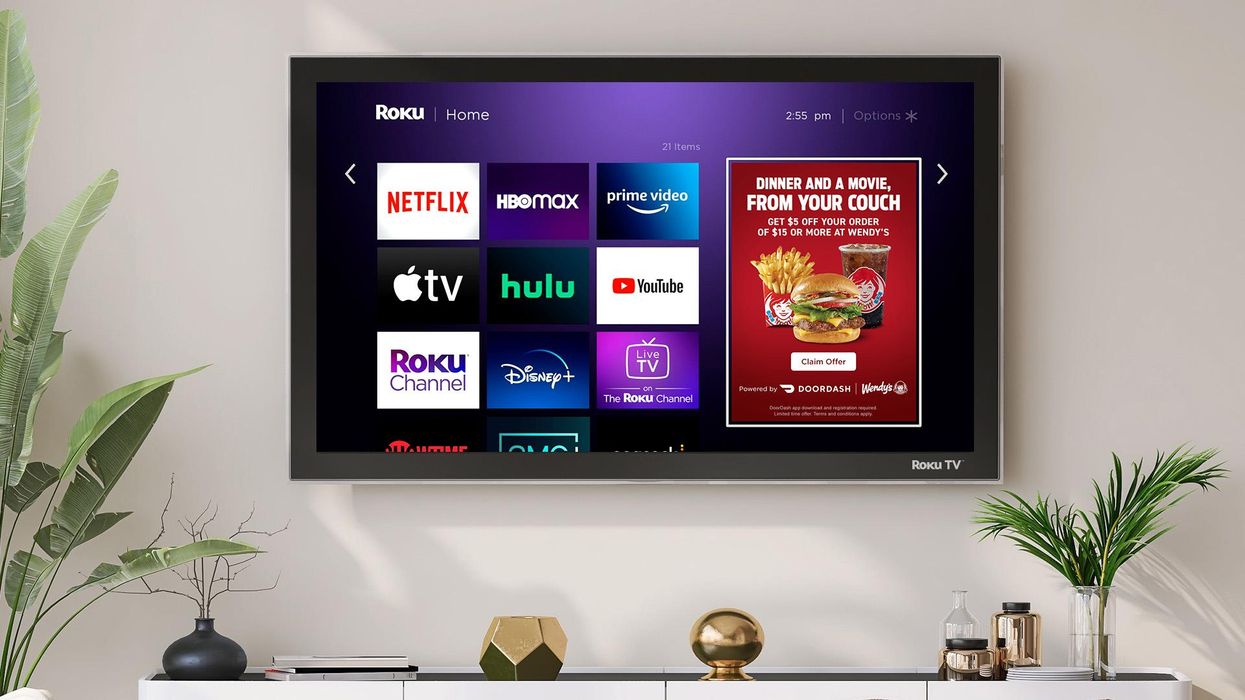Marketing
13 March 2023
Best Buy will provide first-party data to Roku for streaming ads
Consumer electronics is a top retail media category.

Roku ads have more data behind them. (Courtesy photo)
Consumer electronics is a top retail media category.

Roku ads have more data behind them. (Courtesy photo)
Best Buy’s advertising capabilities are set to help power a streaming platform.
The news: Best Buy will provide its first-party advertising data to Roku for targeting and closed loop measurement. It means Best Buy’s year-old retail media network is now powering advertising beyond its own platform.
How it works: Best Buy and Roku said the goal is to make TV advertising “more relevant and performance-driven.”
The partners will provide targeting, optimization and measurement of ads on Roku that use shopper data from Best Buy. As a retailer, Best Buy has access to first party data at the purchase level, which can provide details about a shopper that signals their intent to buy certain products. That’s valuable to advertisers, who want to reach the consumers that are most likely to buy a product.
Not just ads: This is part of a wider partnership that will also feature a prominent place for Roku-branded TVs at Best Buy. This week,tThe two companies are partnering on an interactive popup at SXSW in Austin.
Key quote: “Our goal is to create a better TV experience for everyone,” saidJulian Mintz, co-head of U.S. brand sales for Roku Media. “We’re bringing together our entire business to build the future of entertainment and advertising — making the TV experience simpler, offering the right marketing, data, tech, and scale to drive real results, and helping win the entire streamer’s journey together with Best Buy.”
What it means for retail media:
Activating consumer electronics: While retail media is often considered the province of major CPG brands or Amazon sellers, consumer electronics are playing an outsize role in the early growth of this format. According to MediaRadar, this category accounted for 15% of retail media spend in 2022, leading all categories. That helps explain why Roku wants to add Best Buy’s data to the mix: Understanding intent in one of the most popular advertising categories can help better reach shoppers with those products.
Going offsite: The partnership shows how retail media is extending beyond retailers’ own marketplaces. The first-party data being used by Roku is a valuable asset to the streaming platform’s advertising effectiveness. First-party data has been understood to operate within a “walled garden,” where data owned by a retailer can only be used in their store. This partnership shows how technology is quickly climbing over that barrier. Importantly, brands and platforms will have to keep privacy in mind as more of these partnerships take hold.
Consider privacy: One major catalyst for the growth of retail media was privacy-oriented changes to third party tools, notably the Apple App Tracking Transparency changes that dealt a blow to Facebook's vaunted attribution engine. To become a lasting marketing channel, retail media can’t simply repeat the same tactics that brought so much scrutiny in the past, or recent history indicates it will repeat the same fate as advertising on the open internet.
Streaming ahead: Roku’s involvement underscores a key growth area for advertising: Streaming platforms. Called Connected TV, or CTV, streaming offers a form of TV advertising that reaches people while they are on their couch and passively watching content in a pastime that is familiar to most Americans, while also bringing in the targeting and measurement capabilities of the internet. Best Buy’s partnership with Roku shows that there is room not only for retailers to advertise products in that equation, but also to leverage data that is at the heart of a whole new business model.
Further reading: Roku has been on the forefront of combining commerce and media. It has also recently partnered with Walmart and DoorDash to create shoppable ads that allow consumers to order items using their remote.
On the Move has the latest from Amazon, Lovesac and more.
Ryan Cohen is executive chairman of GameStop. (Photo by Flickr user Bill Jerome, used under a Creative Commons) license.
This week, leadership is changing at GameStop, Sorel and Beautycounter. Meanwhile, key executives are departing at Amazon, Wayfair and Lovesac.
Here’s a look at the latest shuffles:
GameStop announced the termination of Matthew Furlong as CEO on Wednesday. A brief statement did not provide a reason for the firing.
With the move, Chewy founder and activist investor Ryan Cohen was named executive chairman of the video game retailer. Cohen will be responsible for capital allocation and overseeing management.
It came as the company reported a 10% year-over-year decline in net sales for the first quarter. Meanwhile, the company’s net loss improved by 62%.
In an SEC filing, GameStop further added this “We believe the combination of these efforts to stabilize and optimize our core business and achieve sustained profitability while also focusing on capital allocation under Mr. Cohen’s leadership will further unlock long-term value creation for our stockholders.”
Cohen was revealed as GameStop's largest shareholder when he disclosed a 10% stake in the retailer in 2020. GameStop went on to become a leading name in the meme stock rise of 2021.
Mark Nenow is stepping down as president of the Sorel brand in order to focus on his health.
After rising to the role in 2015, Nenow spearheaded a transformation of Columbia Sportswear-owned Sorel from a men’s workwear brand to a fashion-focused brand that led with a women’s offering of boots, sandals and sneakers.
“Mark led the brand to sales of $347 million in net sales in 2022,” said Columbia Sportswear CEO Tim Boyle, in a statement. “His leadership has been invaluable to this company, and we wish him the very best.”
Columbia will conduct a search for Nenow’s replacement. Craig Zanon, the company’s SVP of emerging brands, will lead Sorel in the interim.
Beautycounter appointed board member Mindy Mackenzie as interim CEO, succeeding Marc Rey. According to the brand, Rey and the board “mutually decided to transition to a new phase of leadership for Beautycounter.”
McKenzie, a former executive at Carlyle, McKinsey and Jim Beam, will lead the company as it conducts a search for a permanent CEO. Additionally, former Natura & Co CEO Roberto Marques will join Beautycounter’s board as chair.
As part of the transition, Nicole Malozi is also joining the company as chief financial officer. She brings experience from Tatcha, Nike, and DFS Group Limited.
Melissa Nick, a VP of customer fulfillment for North America at Amazon, will leave the company, effective June 16, CNBC reported. Nick joined the company in 2014, and oversaw a region that included nearly 300 fulfillment centers. After doubling its supply chain footprint during the pandemic, Amazon recently reorganized its fulfillment operations to take a regional approach, as opposed to a national model that often resulted in items shipping across the country.

Jon Blotner (Courtesy photo)
Steve Oblak will retire from the role of chief commercial officer at home goods marketplace Wayfair. With the move, Jon Blotner will be promoted to chief commercial officer.
"Steve has served as a critical part of our leadership team and played a pivotal role in Wayfair's growth, helping us grow from a $250 million business when he joined to $12 billion in net revenue today,” said Wayfair CEO Niraj Shah, in a statement. “He oversaw countless milestones, from helping to launch the Wayfair brand as we brought together hundreds of sites into a single platform, to launching new categories, business lines, and geographies while overseeing our North American and European businesses, to leading our debut into physical retail.”
Blotner previously oversaw exclusive and specialty retail brands, as well as digital media at Wayfair. Before joining the company, he served as president of Gemvara.com prior to its 2016 acquisition by Berkshire Hathaway.
Furniture retailer Lovesac said Donna Dellomo will retire as EVP and CFO, and move to an advisory role, effective June 30. Dellomo was with Lovesac for six years.
Keith Siegner was appointed as the next EVP and CFO. He brings experience as CFO of esports company Vindex, as well as executive roles at Yum! Brands, UBS Securities and Credit Suisse.
Additionally, Jack Krause will retire from the role of chief strategy officer, effective June 30. His responsibilities will be divided between CEO Shawn Nelson and president Mary Fox.
“Since joining Lovesac, Jack has played an instrumental role in transforming the Company into a true omni channel retailer by helping expand our physical touchpoints and digital platform as we continue to disrupt the industry,” said Nelson, in a statement.
The National Retail Federation announced the addition of five new board members. They include: